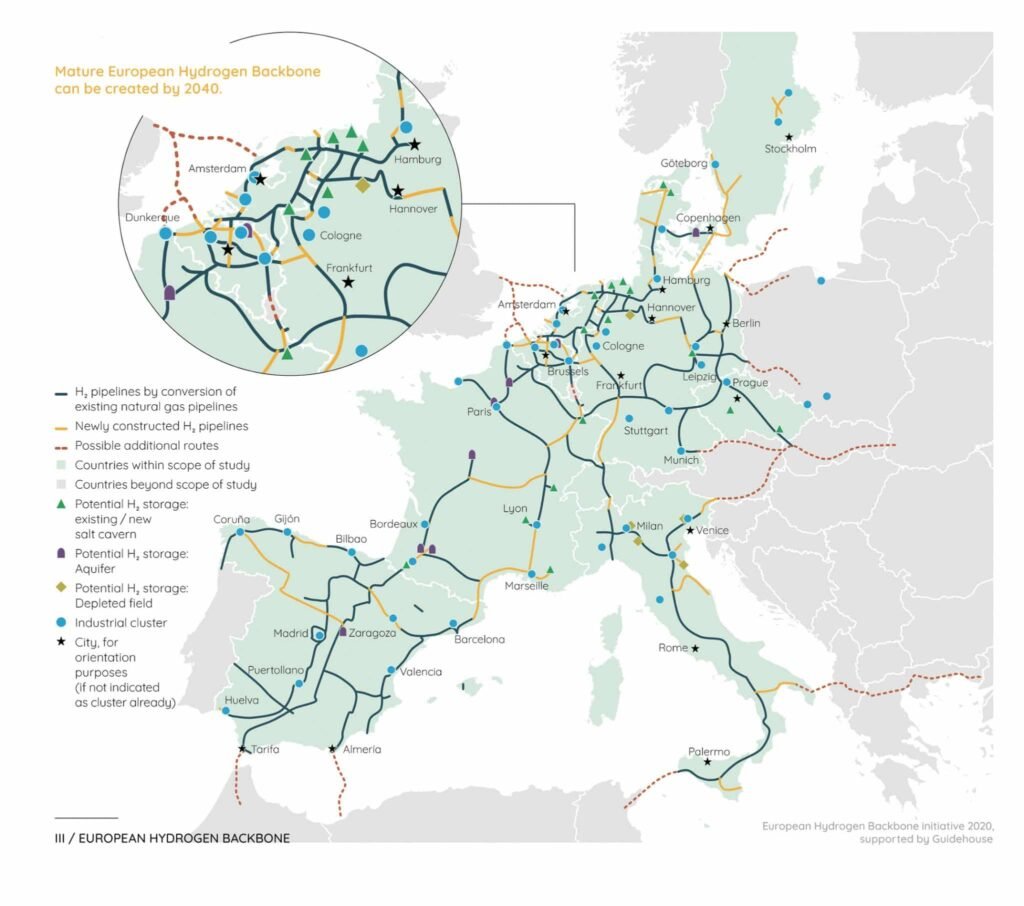On the way to a European hydrogen backbone, GRTgaz, Teréga and nine other gas operators came together to present their plan as part of the European strategy. Objective: transport hydrogen across Europe by connecting production areas and relying on existing networks.
GRTgaz, Teréga and nine other gas infrastructure managers, operating in nine Member States, offer their vision of the development of this European “hydrogen backbone”. The work carried out by GRTgaz with Teréga, Enagás, Energinet, Fluxys Belgium, Gasunie, NET4GAS, OGE, Ontras, Snam, Swedegas, supported by Guidehouse, shows that their existing gas networks can be adapted to transport hydrogen at an affordable cost .
A European network
For Thierry Trouvé, Managing Director of GRTgaz, “in a context of energy transition, GRTgaz places carbon neutrality at the heart of its long-term strategy and is sustainably orienting its infrastructure towards the transport of low-carbon and renewable gas and hydrogen”. For Dominique Mockly, president and CEO of Teréga, “this European network to transport hydrogen would allow Europe to achieve carbon neutrality in 2050 by relying on existing gas infrastructures, thus minimizing the cost of the transition energy for the end consumer. This transport network will be key for the development of hydrogen on a large scale in Europe.”
23 000 km and 2040!
For GRTgaz, Teréga and their counterparts in Europe, the gradual emergence of a hydrogen network from the middle of the decade is possible, to reach by 2030 a first set totaling 6,800 kilometers connecting the different European valleys of the hydrogen (Hydrogen Valleys). The study foresees the gradual appearance of a European network from 2025 to constitute a true European backbone. By 2040, this network could reach 23,000 kilometers, comprising 75% of existing natural gas pipelines converted to accommodate pure hydrogen and 25% of new pipelines. Ultimately, two parallel and complementary gas transport networks could thus emerge in Europe: one network intended for the transport of hydrogen and another for the transport of (bio)methane.
The cost of creating this network is estimated between 27 and 64 billion euros, much lower than that of an entirely new network and reasonable in view of the overall costs to be agreed for the development of the production and uses of hydrogen. low carbon and renewable. The average cost of transport is estimated between 0.09 and 0.17 euros per kilo of hydrogen over 1,000 kilometers, compared to the cost of producing renewable hydrogen of 2.5 to 5.5 euros per kilo targeted by European strategy. This European “hydrogen backbone” will make it possible to transport hydrogen over long distances at lower cost and thus optimize the overall development cost to produce low-carbon and renewable hydrogen where it will be inexpensive and bring it back to the big ones. consumption centers. The group of infrastructure managers is convinced that the European “hydrogen backbone” will be able to cover the entire European Union.

